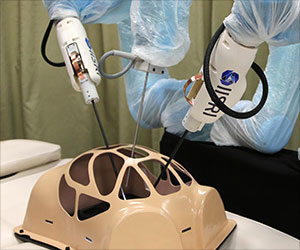Flexible sensors can now be ingested to detect gastro-instenstinal slowdowns , excessive food intake and digestive tract diseases
Highlights
- A flexible sensor now can be digested to monitor the rhythmic contractions of digestive tract
- This flexible sensor can be rolled up and swallowed
- Upon ingestion, it can stick to the stomach wall or intestinal lining to monitor food intake of obese patients as well
Properties of flexible sensors
The flexible devices are based on piezoelectric materials, which generate a current and voltage when they are mechanically deformed.
They also incorporate polymers with elasticity similar to that of human skin, so that they can conform to the skin and stretch when the skin stretches.
How was the study conducted ?
The flexibility of the device could offer improved safety over more rigid ingestible devices, the researchers say.
How are flexible sensors made ?
With the goal of developing a more flexible sensor that might offer improved safety, Traverso teamed up with Dagdeviren, who previously developed flexible electronic devices such as a wearable blood pressure sensor and flexible mechanical energy harvesters.
To make the new sensor,
- Electronic circuits have to be first fabricated on a silicon wafer.
- The circuits contain two electrodes: a gold electrode placed atop a piezoelectric material called PZT, and a platinum electrode on the underside of the PZT.
- Once the circuit is fabricated, it can be removed from the silicon wafer and printed onto a flexible polymer called polyimide.
Flexible sensors used in this study
The ingestible sensor that the researchers designed for this study is 2 by 2.5 centimeters and can be rolled up and placed in a capsule that dissolves after being swallowed.
In tests in pigs, the sensors successfully adhered to the stomach lining after being delivered endoscopically.
Through external cables, the sensors transmitted information about how much voltage the piezoelectrical sensor generated, from which the researchers could calculate how much the stomach wall was moving, as well as distinguish when food or liquid was ingested.
"For the first time, we showed that a flexible, piezoelectric device can stay in the stomach up to two days without any electrical or mechanical degradation," Dagdeviren says.
Diagnostic value
This type of sensor could make it easier to diagnose digestive disorders that impair motility of the digestive tract, which can result in difficulty swallowing, nausea, gas, or constipation.
Doctors could also use it to help measure the food intake of patients being treated for obesity. "Having a window into what an individual is actually ingesting at home is helpful because sometimes it’s difficult for patients to really benchmark themselves and know how much is being consumed," Traverso says.
In future versions of the device, the researchers plan to harvest some of the energy generated by the piezoelectric material to power other features, including additional sensors and wireless transmitters. Such devices would not require a battery, further improving their potential safety.
Reference
- Canan Dagdeviren, Farhad Javid, Pauline Joe, Thomas von Erlach, Taylor Bensel, Zijun Wei, Sarah Saxton, Cody Cleveland, Lucas Booth, Shane McDonnell, Joy Collins, Alison Hayward, Robert Langer & Giovanni Traverso.Flexible piezoelectric devices for gastrointestinal motility sensing, Nature Biomedical Engineering.doi:10.1038/s41551-017-0140-7
Source-Eurekalert













